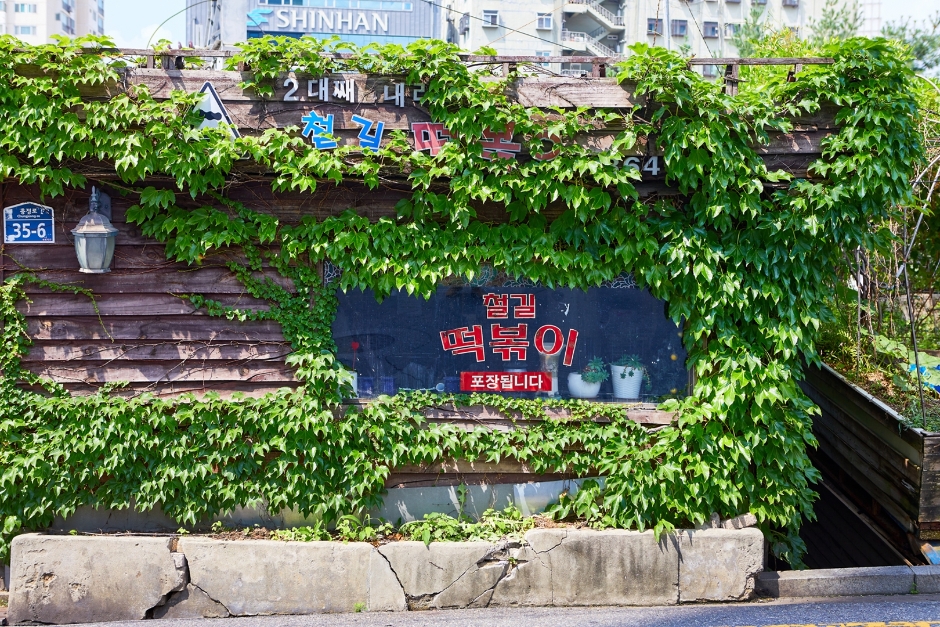Rockport - Lotte Seoul Station Branch [Tax Refund Shop] (락포트 롯데 서울역점)
5.8Km 2024-04-22
405, Hangang-daero, Jung-gu, Seoul
-
Kangol - Lotte Outlets Seoul Station Branch [Tax Refund Shop] (캉골 롯데아울렛서울역)
5.8Km 2024-06-27
405, Hangang-daero, Jung-gu, Seoul
-
Xexymix - Lotte Outlets Seoul Station Branch [Tax Refund Shop] (젝시미스 롯데아울렛 서울역)
5.8Km 2024-06-26
405, Hangang-daero, Jung-gu, Seoul
-
Olive Young - Seoul Station Branch [Tax Refund Shop] (올리브영 서울역점)
5.8Km 2024-06-27
405, Hangang-daero, Jung-gu, Seoul
-
Cheolgil Tteokbokki (철길떡볶이)
5.8Km 2024-03-18
35-6 Chungjeong-ro, Seodaemun-gu, Seoul
Cheolgil Tteokbokki is a famous pilgrimage site for tteokbokki lovers. As the name suggests, it is located next to the railroad (“cheolgil” in Korean) near Chungjeongno Station. There is a wide variety of Korean dishes available, from tteokbokki that will bring back childhood memories to gimbap, deep-fried dishes, and sundae. As the name suggests, it is located next to the railroad near Chungjeongno Station. The restaurant has been in operation for two generations while maintaining its original appearance. The old signboard and exterior have a nostalgic feeling. Unlike tteokbokki in soup, which is currently popular, this tteokbokki with chewy rice cakes is coated well with thick spicy sauce. It's very delicious when mixed with the restaurant’s deep-fried foods. Visitors are recommended to take the seat outdoors to enjoy the view of the railroad tracks while eating.
Namsan Outdoor Botanical Garden (남산 야외식물원)
5.9Km 2022-12-16
323, Sowol-ro, Yongsan-gu, Seoul
+82-2-798-3771
Namsan Outdoor Botanical Garden opened its doors on February 18, 1997 in Hannam-dong, where the residential complex for foreigners once stood before it was demolished in 1994. Covering an area of around 59 ㎡, it is divided into 13 themed gardens with a total 117,132 plants from 269 species. Among this diversity, 60,912 plants from 129 species are tree types and 56,220 plants from 140 species are grass types.

![Kangol - Lotte Outlets Seoul Station Branch [Tax Refund Shop] (캉골 롯데아울렛서울역)](http://tong.visitkorea.or.kr/cms/resource/23/3314123_image2_1.jpg)
![Xexymix - Lotte Outlets Seoul Station Branch [Tax Refund Shop] (젝시미스 롯데아울렛 서울역)](http://tong.visitkorea.or.kr/cms/resource/45/3313345_image2_1.jpg)
![Black Yak [Tax Refund Shop] (블랙야크)](http://tong.visitkorea.or.kr/cms/resource/84/2890084_image2_1.jpg)
![Nepa [Tax Refund Shop] (네파)](http://tong.visitkorea.or.kr/cms/resource/37/2888437_image2_1.jpg)
![Vivien [Tax Refund Shop] (비비안)](http://tong.visitkorea.or.kr/cms/resource/67/2878567_image2_1.jpg)
![Venus [Tax Refund Shop] (비너스)](http://tong.visitkorea.or.kr/cms/resource/95/3314795_image2_1.jpg)

 English
English
 한국어
한국어 日本語
日本語 中文(简体)
中文(简体) Deutsch
Deutsch Français
Français Español
Español Русский
Русский